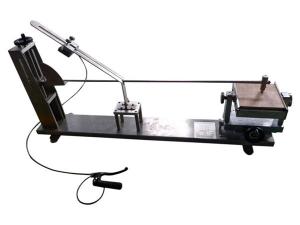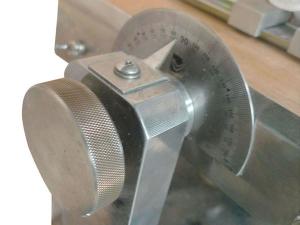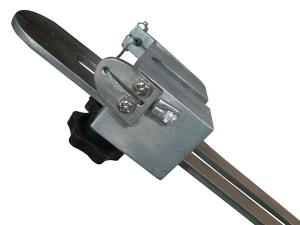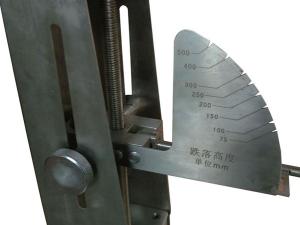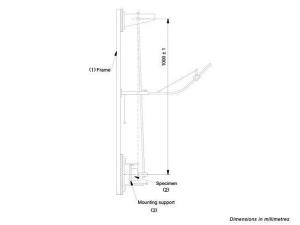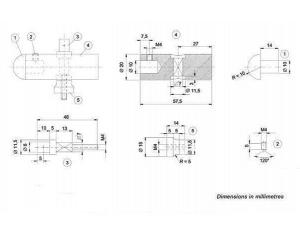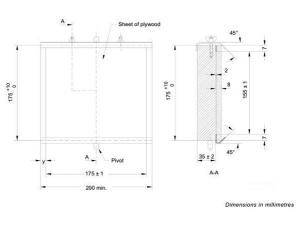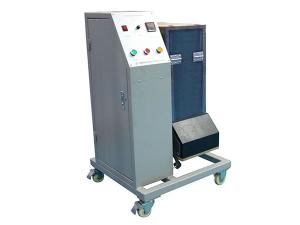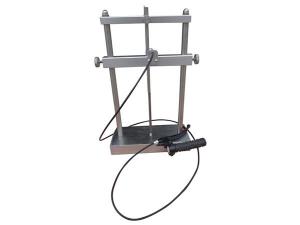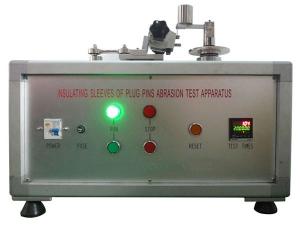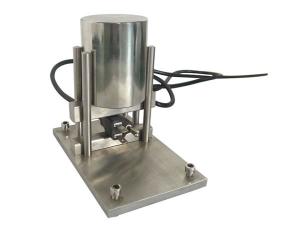Standard
IEC60884-1 2013 clause 24.1, IEC60669-1, IEC60068-2-75
Application
This device is designed to test the mechanical strength of plugs and socket-outlets, surface type mounting boxes, screw glands, gland covers, switch and other electrical accessories for household plugs.
Test Sample
Plugs and socket-outlets, surface type mounting boxes, screw glands, gland covers, switch and other electrical accessories.
Feature
The mounting bracket can be moved up and down, left and right and the impact angle can be adjusted. The device is a low energy pendulum impact device for 2J and below.

| Application of the blows | |||
| Sketch | Total number of blows | Points of application | Parts to be tested |
| 26a) | 3 | One at the centre One between O and P a One between O and Q a | A |
| 26b) | 2 | One between O and R a One between O and S a | A |
| 26c) | 2 | One on the surface T a One on the surface U a | B,C and D |
| 26d) | 2 | One on the surface V a One on the surface Z a | B,C and D |
| The blow is applied to the most unfavorable point | |||
The dimension of the recess in the hornbeam block are given as an example. More general dimensions are under consideration.
Parameters
1. Pendulum: Length: 1000mm; external diameter: 9mm; steel pipe wall thickness: 0.5mm; material: steel; weight: 100±1g
2. Mounting bracket: weight: 10±1 kg; it is well-set and the Horizontal direction and the vertical direction can be adjusted. The whole bracket can be rotated 90°through the rotation axis.
3. Striking element: 150g, equivalent mass 200g. (200g striking element for option)
4. Impact energy, equivalent mass and drop height table
5. Operation: manual release of the striking element
| Energy/J | 0.14 | 0.2 | (0.3) | 0.35 | (0.4) | 0.5 | 0.7 | 1 | 2 | 5 | 10 | 20 | 50 | ||
| Equivalent mass /kg | 0.25 | (0.2) | 0.25 | (0.2) | 0.25 | (0.2) | (0.2) | 0.25 | 0.25 | 0 .25 | 0.5 | 1.7 | 5 | 5 | 10 |
| drop height ±1%mm | 56 | (100) | 80 | (150) | 140 | (200) | (250) | 200 | 280 | 400 | 400 | 300 | 200 | 400 | 500 |
| Notes: 1. See note in IEC 60068-2-75 3.2.2 2. In this part, the energy (J) is calculated taking the standard acceleration due to the earth's gravity(g), rounded up to the nearest whole number, that is 10m/s². |
|||||||||||||||

